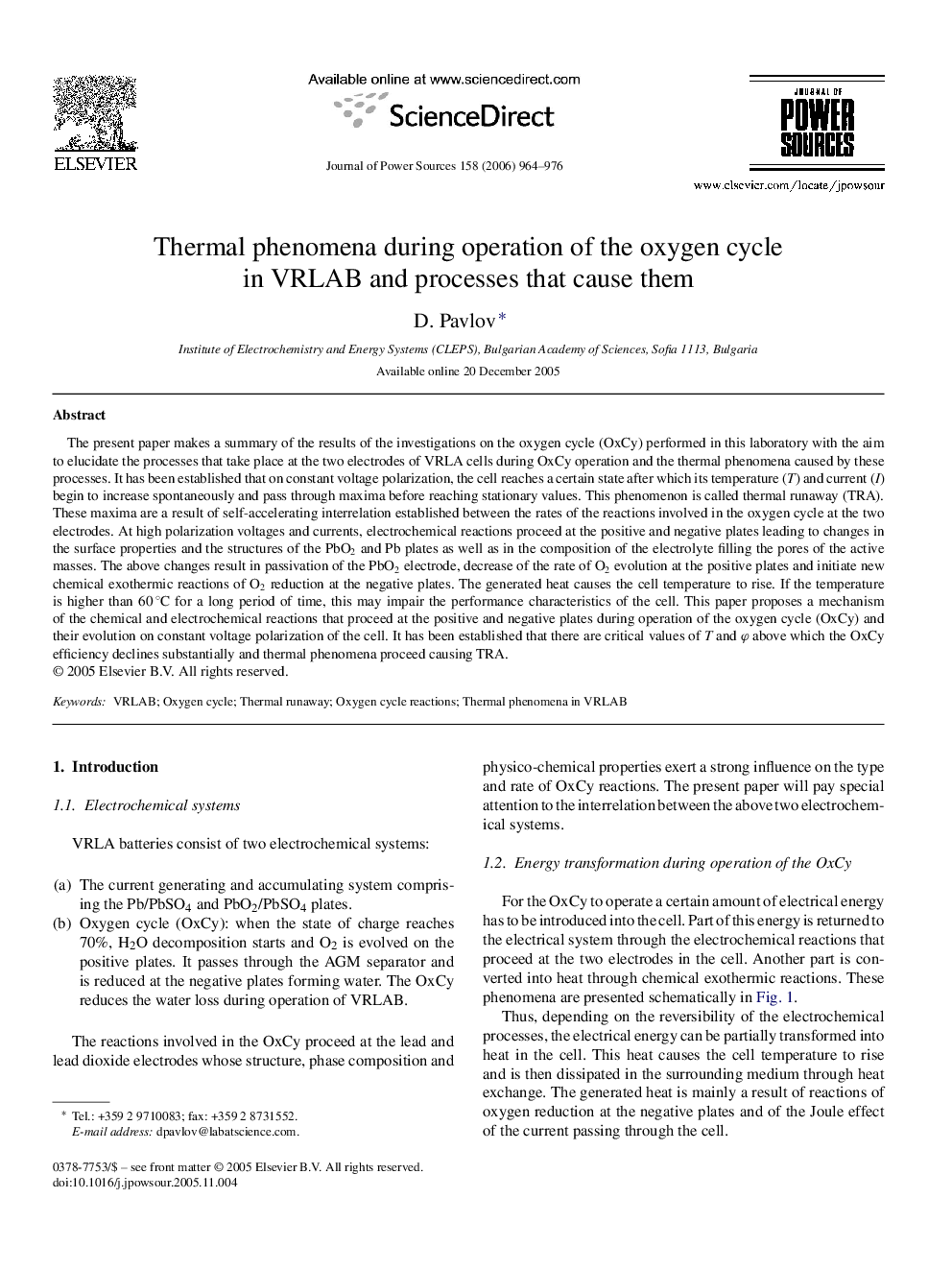| Article ID | Journal | Published Year | Pages | File Type |
|---|---|---|---|---|
| 1287358 | Journal of Power Sources | 2006 | 13 Pages |
The present paper makes a summary of the results of the investigations on the oxygen cycle (OxCy) performed in this laboratory with the aim to elucidate the processes that take place at the two electrodes of VRLA cells during OxCy operation and the thermal phenomena caused by these processes. It has been established that on constant voltage polarization, the cell reaches a certain state after which its temperature (T) and current (I) begin to increase spontaneously and pass through maxima before reaching stationary values. This phenomenon is called thermal runaway (TRA). These maxima are a result of self-accelerating interrelation established between the rates of the reactions involved in the oxygen cycle at the two electrodes. At high polarization voltages and currents, electrochemical reactions proceed at the positive and negative plates leading to changes in the surface properties and the structures of the PbO2 and Pb plates as well as in the composition of the electrolyte filling the pores of the active masses. The above changes result in passivation of the PbO2 electrode, decrease of the rate of O2 evolution at the positive plates and initiate new chemical exothermic reactions of O2 reduction at the negative plates. The generated heat causes the cell temperature to rise. If the temperature is higher than 60 °C for a long period of time, this may impair the performance characteristics of the cell. This paper proposes a mechanism of the chemical and electrochemical reactions that proceed at the positive and negative plates during operation of the oxygen cycle (OxCy) and their evolution on constant voltage polarization of the cell. It has been established that there are critical values of T and φ above which the OxCy efficiency declines substantially and thermal phenomena proceed causing TRA.
